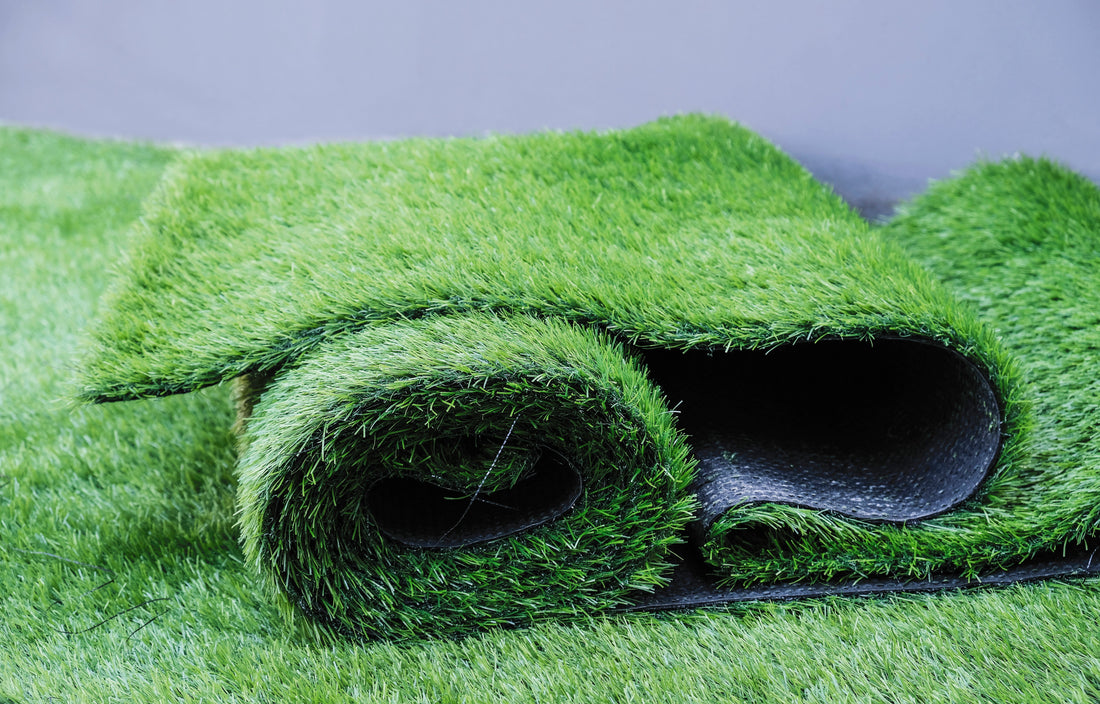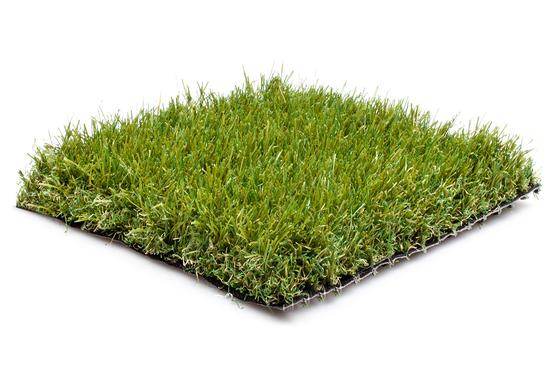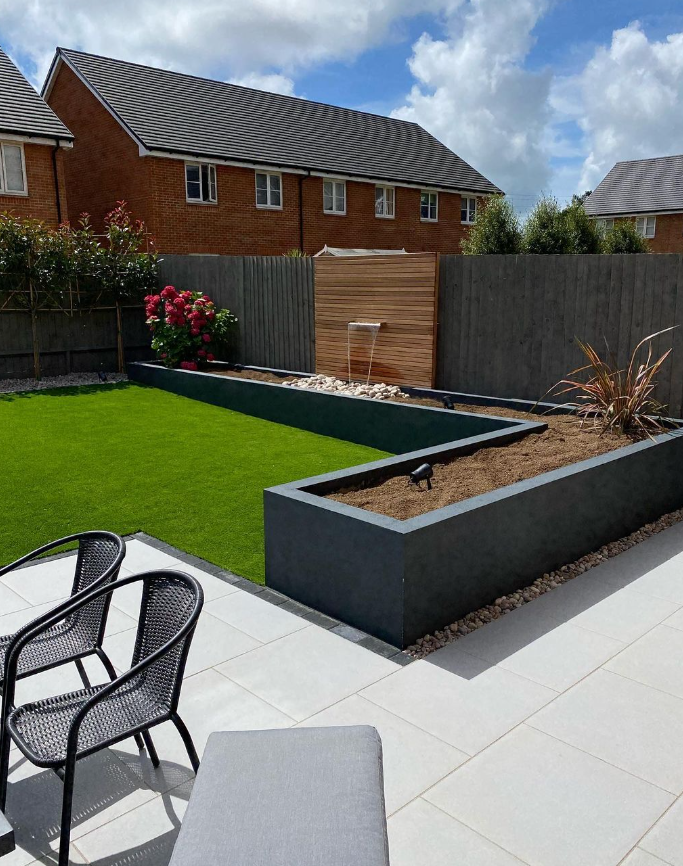
5 Ways to Stop Your Artificial Grass From Smelling
If your artificial grass has started smelling a bit off, you’re not imagining it. Pet mess, leftover food or standing rainwater can all leave behind unwanted odours, even on quality turf. The good news? It's fixable—and it doesn’t need to be a big job.
Whether it’s a quick clean or a smarter setup underneath, there are straightforward ways to keep things fresh. So if you're wondering how to keep artificial turf from smelling, you’re in the right place. These tips work for long-term upkeep and one-off stink bombs alike—no stress, no harsh chemicals, and no guesswork.
1. Use Enzyme Cleaners for Organic Odours

So, pet mess and food spills—pretty common culprits, right? The trick is that they don’t just sit on the surface. They sink in, especially if the turf’s got any sort of backing or infill. And if you're only rinsing with water, you're probably just masking the problem. That’s where enzyme-based cleaners come in handy.
These cleaners break down organic material at a microbial level, which basically means they get right to the root of the smell—without just covering it up with fragrance. If you’re dealing with pet odour on fake grass, especially from urine, enzyme sprays are your best mate.
Look for options labelled pet-safe, biodegradable and non-toxic. You’ll usually find them under the “artificial lawn cleaner UK” category, or even in vet-recommended cleaning ranges. Some are concentrated formulas—cheaper in the long run—while others come ready to spray.
Quick tip: Apply on dry grass during mild weather so the enzymes have time to work. No need to rinse straight away either, unless the bottle says otherwise.
Of all the artificial grass maintenance tips, this one’s a solid place to start. No fuss, no harsh stuff—just a cleaner lawn that actually smells clean.
2. Install a Proper Drainage Base
If your grass looks the part but still smells like a wet dog—or worse—your base layer might be to blame. A lot of people assume the fake grass itself is the problem, but quite often, it’s what’s underneath that holds on to odours.
When water or pet urine doesn’t drain properly, it tends to pool and linger. That’s when bacteria get comfortable. So if you’ve ruled out surface mess, it could be time to check what’s going on below.
A well-installed lawn should sit on a compacted layer of crushed granite or limestone, not just soil or sand. These materials let liquids drain away instead of soaking back up. Without that base, even the best cleaner for synthetic grass won’t help much—because the smell just keeps coming back.
Check your base if:
-
Puddles stick around for more than 15 minutes after rain.
-
The grass has a damp, musty smell even when clean.
-
You can press down and feel squishiness underfoot.
If that sounds familiar, a rebase might sound like effort—but it’s usually a one-off fix that works.
3. Rinse Regularly with Water

It sounds simple, and that’s because it is—just give your lawn a rinse. Not every day, not even every few days. But a quick wash every week or so, especially in summer or after the dog’s been out a lot, makes a massive difference.
Regular rinsing stops bacteria from settling in and turning into something smellier later. You don’t need a power washer—just a standard garden hose works fine. If you’re on a water meter or watching usage, here are a few water-saving tricks:
-
Rinse early morning or evening to reduce evaporation.
-
Use a watering can with a rose head for targeted spots.
-
Focus only on high-use areas like pet toilet zones.
In that case, rinsing becomes a bit like brushing your teeth—quick, routine, and kind of necessary. It’s the easiest way to stay on top of artificial grass maintenance tips without spending extra.
Oh, and don’t forget—rinsing after it rains can help too. Sometimes, it’s not the rain but what it stirs up that causes the smell.
4. Apply Artificial Grass Deodoriser
Sometimes water and enzyme cleaners just aren’t enough, especially if pets use the same patch over and over. That’s where infills like zeolite come in—a real game changer for long-term smell control.
Zeolite is a naturally occurring mineral that works by trapping ammonia—the stuff in urine that really stinks. It doesn’t just cover it up. It neutralises it. And that makes a huge difference if you're trying to prevent artificial turf smells rather than just react to them.
You can top up your existing lawn with a layer of pet odour infill or add it during installation. Either way, it’s completely safe for pets and kids, and doesn’t need reapplying too often. If you’re wondering where to start, check out our full range of artificial grass to see what pairs best with it.
One thing to remember—zeolite works best with proper drainage and occasional rinsing. Used right, it can hold off that build-up smell for months.
So if smells keep coming back even after cleaning, this might be the long-haul fix you were missing. Zeolite infill for pets? Definitely worth a look.
5. Ensure Good Air Circulation and Sunlight
Sometimes it’s not what’s on the grass—it’s what’s around it. Shade from fences, hedges or garden furniture can stop moisture from drying out, and that’s when bacteria get a bit too comfortable. Good airflow and a bit of sunlight? Surprisingly effective, and completely free.
Sunlight helps sanitise the surface naturally, breaking down bacteria and odours over time. So if your lawn’s always damp in the same spots, try trimming back overhanging branches or shifting heavy planters to let in a bit more light.
Garden airflow checklist:
-
Trim back anything blocking airflow—hedges, fences, or large pots.
-
Avoid leaving outdoor rugs or furniture sitting in one place too long.
-
Let the lawn dry fully between rinses, especially in cooler months.
It’s one of the quieter artificial grass maintenance tips, but it helps keep that fresh-lawn feeling going for longer. It’s like airing out a room—only it’s your garden, and it smells way better after.
So, keeping your artificial lawn smelling fresh doesn’t have to be hard—or expensive. A few simple tweaks, the right products, and a bit of routine can stop smells before they start.
Whether it’s pet odour on fake grass or damp from poor drainage, there’s always a fix that fits.
Still unsure what’s best for your space? Contact us—we’ll help you get it sorted quickly, so your garden stays a place you actually enjoy.


